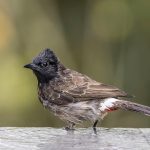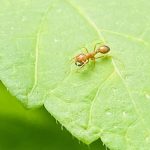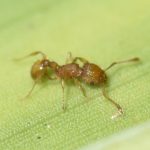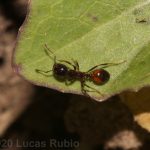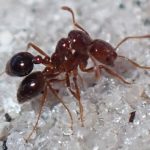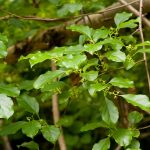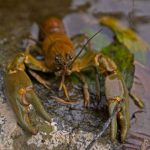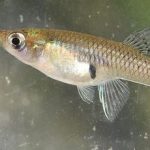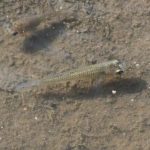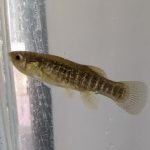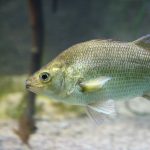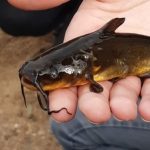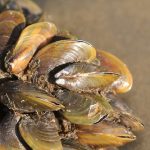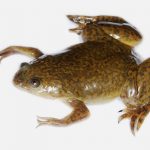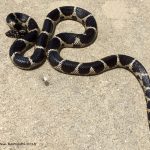In July, 22 new species were added to the list of Invasive Alien Species of Union Concern, known as ‘the Union list’ bringing the total number species on the Union list to 88.1 These additional species include 1 algae, 4 plant and 17 animal species. Of these species 11 are terrestrial, 9 are freshwater and 3 are marine/brackish.1,3 This list is an integral part of the European Union’s Invasive Alien Species Regulations 1143/2014.2 The regulation provides a framework for addressing invasive species at European level. Member states have an obligation to take action2 on all species included on the list through a range of measures:
- Prevention
- Early detection and rapid eradication of new invasions and;
- Management of invasions that are already widespread
The process of adding new species to the Union list
Member states and countries bordering the EU can propose species for inclusion on the Union list under the Regulation2. Proposed species must be accompanied by a risk assessment and all species must meet specific criteria for inclusion. Proposed species may also be identified through the horizon scanning process overseen by panels of experts across member states carried out under this regulation2.
Summary of criteria proposed species must meet for inclusion on ‘the Union list’:
- they must be ‘alien’ to the EU territory
- capable of establishing viable populations
- have significant impacts on biodiversity, ecosystem services, human health/economy
- require action at an EU level to prevent their introduction, establishment or spread
- inclusion on the Union list will effectively prevent, minimise or mitigate their adverse impact.
*See the Regulation for full details of criteria and content required within risk assessment.
Many of the new additions to the list are still absent or very rare in Europe but their introduction or further spread could cause significant environmental, societal, or economic harm.3 Fortunately, only one species, Himalayan knotweed (Koenigia polystachya), is currently present in Ireland, most likely introduced through the horticulture trade. This species was first recorded in Ireland in 1928 and has since spread throughout the county. This species can form dense stands that can envelop and outcompete with native species. When it dies back in winter, it can also leave areas vulnerable to erosion.6 This species has been included on Ireland’s ‘Third Schedule’ of the Birds and Habitats Directive since its enactment in 2011.4 Under this legislation it is an offense to plant or allow this species to spread.4 Alongside Himalayan knotweed, the Rusty Crayfish (Faxonius rusticus) is a species which appears on the Third Schedule and has now been added to the Union list. 1,4 This species emerged as one of the Top 40 potential invader species to Ireland from a horizon scan exercise carried out on the island of Ireland basis in 2018.5 This species can impact on ecosystems in a multitude of ways, most notably its capacity to outcompete with and effectively replace native species. Shifts in food webs have also been noted for these species.7 The inclusion of these species on the Union list will reinforce and provide support for our national legislation and allow additional measures on their sale and trade to be banned.
All species on the Union list will be subject to restrictions under the Regulation. Some allowances are made for pet owners and gardeners with listed species. Under the regulation pets acquired before their listing can be kept (in captivity) to the end of their natural life and without reproduction. Listed plants that are currently planted in gardens can be kept as long as they are prevented from spreading further.2,3 A ban for the trade and sale of listed species will also apply under the regulation subject to transition periods of one year.2,3
Table showing the 22 new additions to the list of Invasive Alien Species of Union Concern1
References
- Official Journal of the European Union L186 (2022) Commission Implementing Regulation (EU) 2022/1203 of 12 July 2022 amending Implementing Regulation (EU) 2016/1141 to update the list of invasive alien species of Union concern. Volume 65: 10 -13.
- Regulation (EU) No 1143/2014 of the European Parliament and of the Council of 22 October 2014 on the prevention and management of the introduction and spread of invasive alien species
- Kelle Moreau (2022) ‘22 species added to the European list of invasive alien species’ https://www.naturalsciences.be/en/news/item/21990/ Royal Belgian Institute of Natural Science
- S.I. No. 477/2011 – European Communities (Birds and Natural Habitats) Regulations 2011.
- Lucy F. et al. (2020) Horizon scan of invasive alien species for the island of Ireland Management of Biological Invasions 11 (2): 155–177
- R. Beringen, R.S.E.W. Leuven, B. Odé, M. Verhofstad & J.L.C.H. van Valkenburg (2019). Risk assessment of four Asian knotweeds in Europe FLORON report: 2018.049.e1
- Olden, J.D., Mc Carthy, J.M., Macted, J.T., Fetzer, W.W., Jake, M. Cander Zanden (2006) The rapid spread of rusty crayfish (Orconectes rusticus) with observations on native crayfish declines in Wisconsin (U.S.A.) over the past 130 years Biological Invasions 8: 1621 – 1628





